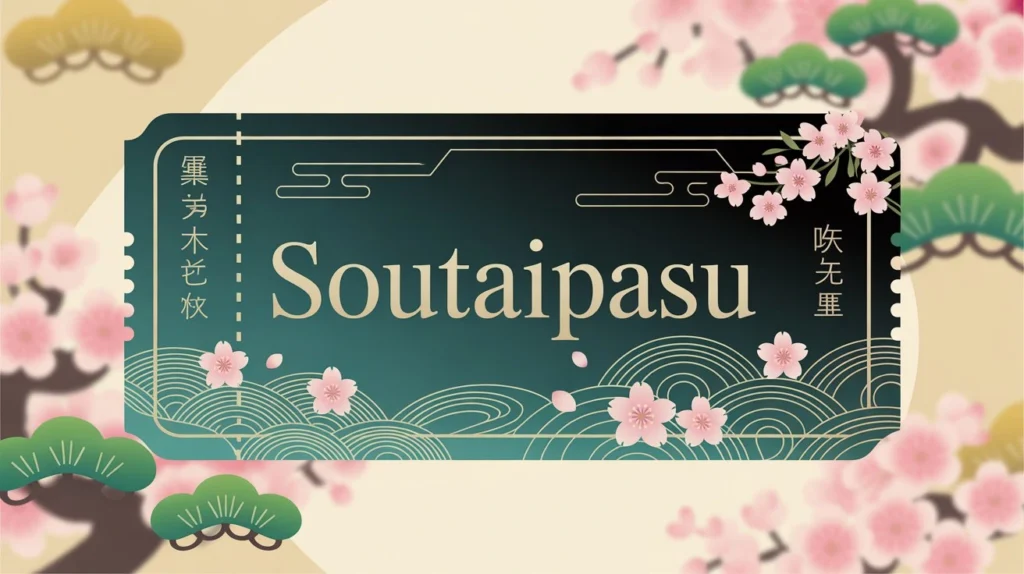The word soutaipasu may sound unfamiliar to many, but for those curious about modern Japanese culture and its evolving language, it holds intriguing significance. Language is not only about communication; it is also a mirror reflecting how people adapt to technology, traditions, and societal shifts. In this regard, this expression has become a keyword that sparks curiosity. Many users search for it to understand its meaning, applications, and relevance in both linguistic and cultural contexts.
To fully appreciate the term, one must dive deeper into its origins, explore its layers of meaning, and examine how it is applied in different aspects of life. For learners, researchers, and enthusiasts of Japanese culture, discovering this word opens doors to a broader understanding of how vocabulary travels, transforms, and influences.
What is Soutaipasu
At its core, soutaipasu is derived from the Japanese language, often shaped by phonetic sounds and the borrowing of foreign concepts into katakana or romaji. It is a coined term that carries a meaning related to pass, exchange, or substitution depending on context. Like many Japanese expressions that blend local and foreign influences, this word embodies the creativity of modern communication.
It does not have a single universal definition but resonates differently in varied settings. Sometimes it is linked with passes or tickets, sometimes with symbolic meaning, and sometimes as a technical or slang expression. This flexibility makes the concept fascinating for those who study language and culture.
Origins and Linguistic Context of Soutaipasu
The Japanese language has a history of adopting and reshaping foreign words, particularly from English. These borrowed terms often undergo phonetic transformation to fit Japanese syllables. This particular expression is thought to have roots in such adaptations. Over time, it developed into a phrase or compound that may carry specific significance in niches such as entertainment, digital culture, or transport systems.
In everyday usage, it may not be common across Japan. However, when it does appear, it signals something unique—often tied to context, such as tickets, transitions, or symbolic substitutes. This makes it worth exploring for both linguists and curious learners.
Why Soutaipasu Matters Today
Language learners often search for soutaipasu because it represents the richness of modern Japanese vocabulary. Words like this not only expand linguistic knowledge but also open insights into how cultural exchange works. Beyond literal meaning, this expression can be seen as a bridge—linking traditional Japanese expression with global influence.
In an increasingly connected world, terms like these help learners understand cultural adaptability. They show how language evolves to express modern realities, whether through transportation systems, media, or digital interaction. Understanding such terms helps users connect better with Japanese society.
Benefits of Understanding Soutaipasu
- Understanding this concept brings multiple benefits. For students of Japanese, it not only expands vocabulary but also improves comprehension of expressions in different contexts.
- In addition, for travelers, the term may surface in real situations involving tickets, passes, or exchanges, making it a practical word to recognize.
- Likewise, cultural researchers find it valuable as it illustrates how language absorbs, reshapes, and transforms foreign influences over time.
- Furthermore, it highlights the importance of adaptability. Since its meaning shifts with context, learners are encouraged to adjust their interpretations accordingly.
- As a result, this process develops stronger communication skills, enhances cultural sensitivity, and increases overall linguistic flexibility.
Challenges in Interpreting Soutaipasu
The main challenge with this word is its ambiguity. Since it lacks a single universal definition, learners may find it confusing. Context becomes critical. Without proper context, one might misinterpret its use. For example, in one setting it could mean a physical pass, while in another it might carry symbolic meaning.
Another challenge lies in pronunciation and spelling. Non-native speakers often struggle to recognize how it fits within Japanese phonetics. This makes it essential to study the expression not just in isolation but through examples of real usage.
Real-World Examples of Soutaipasu
Imagine a traveler navigating Japan’s transport system. They may encounter terms that resemble this one when referring to exchange tickets or passes. In entertainment, similar-sounding words may appear in anime, games, or local slang, giving them a different flavor.
For instance, it could appear metaphorically in a story, symbolizing a “switch” or “exchange” between characters or roles. In digital spaces, the same might refer to access passes or identity tokens. Such diversity in usage makes it versatile and context-driven.
Soutaipasu in Modern Japanese Culture
Modern Japanese culture thrives on blending tradition with innovation. This concept, as an idea, fits into this by representing flexibility. Whether in media, transport, or casual conversation, it symbolizes the ability to adapt.
For learners engaging with manga, anime, or Japanese dramas, this expression may pop up unexpectedly. Recognizing its role in dialogue can deepen cultural appreciation and help in understanding nuanced expressions.
Step-by-Step Guide to Learning Soutaipasu
The best way to master this word is through exposure and context. First, learners should recognize its pronunciation and spelling. Next, they should explore multiple examples where it is applied. After that, practice using it in sentences to solidify understanding.
Over time, learners can track where it naturally appears—whether in textbooks, digital forums, or daily conversation with Japanese speakers. Building this habit ensures the word is not just memorized but internalized.
Soutaipasu in Language Learning
Language learning is often about patterns, and this word teaches one important lesson: meaning is not fixed but shaped by context. Learners who embrace this idea find it easier to navigate ambiguous expressions.
By integrating it into practice sessions, students can train themselves to adapt. This approach helps not only with one word but with the broader challenge of mastering Japanese expressions that shift in meaning depending on usage.
Cultural Symbolism of Soutaipasu
Beyond literal definition, this word carries symbolic value. It reflects the Japanese tendency to blend and reshape ideas, creating terms that resonate with both local and foreign sensibilities. In this sense, it symbolizes transition, passage, and substitution.
Such symbolism is not limited to words. It echoes cultural values where change and continuity exist side by side. For learners, understanding this expression means appreciating how Japan communicates adaptability through language.
FAQs About Soutaipasu
What does soutaipasu mean?
It is a Japanese term that often refers to passes, exchanges, or symbolic substitutes depending on context.
Is soutaipasu a common word in Japan?
It is not widely used across all regions but appears in specific contexts such as tickets, entertainment, or symbolic expressions.
Can soutaipasu have multiple meanings?
Yes, its meaning shifts based on usage, making context very important when interpreting it.
How can I learn soutaipasu effectively?
Study its pronunciation, review examples in Japanese media, and practice using it in sentences with contextual awareness.
Is soutaipasu related to anime or manga?
In some cases, similar terms may appear in anime, manga, or gamholes to describe switches, exchanges, or passes.
Why is soutaipasu important for learners?
It teaches adaptability in language learning and provides insight into Japanese cultural and linguistic creativity.
Conclusion
Soutaipasu is more than just a word. It embodies the adaptability of language, the fusion of cultures, and the importance of context in communication. For learners, it is a valuable reminder that meaning is not always fixed—it flows and evolves with usage.
By embracing this expression, one not only gains a new vocabulary term but also a deeper appreciation of how Japanese culture expresses transition and exchange. For students, travelers, and enthusiasts, exploring this word enriches understanding and builds stronger cultural connections.
If you are eager to dive deeper into Japanese expressions like soutaipasu, start by engaging with native content, practice consistently, and remain open to the beauty of linguistic adaptation.






